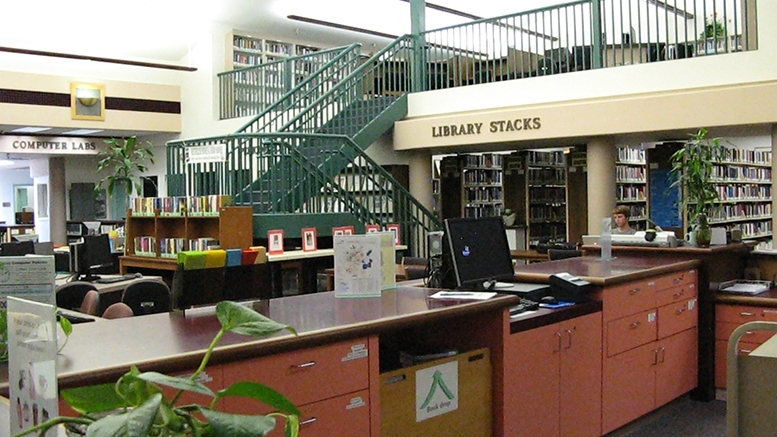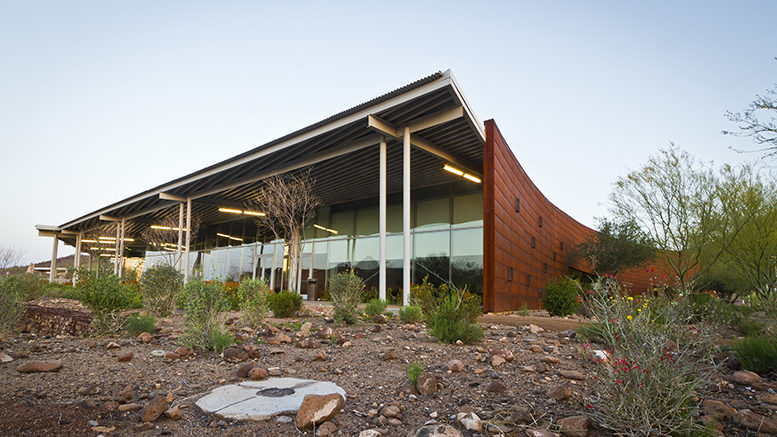Community college libraries have long provided online resources – not just learning materials, but also online access to librarians and staff through chatbots and video conferencing. Those resources have expanded during the pandemic, as has an awareness of all the services campus libraries provide.
This has been a time of “opportunities and challenges,” says Jose Aguinaga, chair of the National Council of Learning Resources, an affiliate council of the American Association of Community Colleges. These last 10 months have offered a “great opportunity to showcase the value and contribution that community college libraries provide” to students and the community, he says.
Aguinaga also is on the library faculty at Glendale Community College (GCC) in Arizona. The college has two libraries, both open to not only the campus community but also county residents. The library has expanded coverage of its online chat service and made sure phones get answered.
“There’s always someone available to provide service,” Aguinaga says. “It’s challenging at times, but that’s the attraction: to provide information to any given user.”
And that information can be anything from help using Microsoft Word to finding case studies to create a business plan.
During the pandemic, GCC librarians also have connected more with faculty. For Aguinaga, this has provided a platform to promote the benefits of open educational resources (OER), something he’s passionate about because they can “enrich pedagogy and the educational experience.”
Most open resources also don’t have as many copyright restrictions as traditional textbooks. Textbook copyrights mean librarians can only legally scan the first few chapters of a book for a student who might not have the funds to purchase the book.
New connections
Librarians at California’s MiraCosta College also connect with different departments to provide tailored orientations, so faculty and students know what’s available online and how to access resources. That’s important because the list of resources offered is growing.
The college has invested in databases that allow students access to “niche and specific” things like virtual architectural tours and scientific labs from home, says Lauren McFall, web services librarian. And, prior to the pandemic, MiraCosta joined with nearly all California community colleges to implement a cloud-based, systemwide platform that allows for shared digital and physical resources across the state. These types of offerings help “bridge the academic and community library,” she adds.
Outreach and orientations are vital because, despite the great resources, “if students can’t find it, it’s worthless,” McFall points out. The library is particularly focusing its outreach to students in rural areas who may not have as much access or understanding of technology.
And it is apparent people are finding what they need. Students logged on to the library’s homepage more than 30,000 times during the fall semester. For those who need lower-tech materials, librarians will mail textbooks and DVDs to students.

Library faculty also partnered with MiraCosta’s Campus Assessment, Resources and Education (CARE) Team – a group that addresses challenges that students may be experiencing to meet their basic needs, such as food, housing, transportation, mental health and more. That partnership made it easy for students to request a laptop, hotspot or both. Library staff has been fulfilling those requests.
“It’s a great way to track what students need,” says Michelle Strauss Ohnstad, manager of library operations. Pre-pandemic, the library had been loaning laptops and hotspots every week. Now, students can borrow the technology for the whole semester.
As with Glendale Community College, online chat services at MiraCosta College’s library have expanded, too. Librarians answered 1,247 chats personally during the fall semester.
“MiraCosta strives to maintain a campus of caring and even during the pandemic, we try as much as possible to replicate this experience with personal phone calls and emails,” Strauss Ohnstad says. “The staff makes a point of responding to student emails quickly, even just to let the student know that they are researching the issue and will get back to them.”
Lessening the burden
McFall and Strauss Ohnstad are very aware of the burdens on students during the pandemic and “want to be a positive force during this time, so they have one less thing to worry about,” Strauss Ohnstad says.
“Students are definitely struggling in many unique ways. But, what does ‘success’ really mean in a global pandemic? Surviving,” McFall says.
MiraCosta as a whole is working to help students with that new definition of success, she adds.
“I feel really lucky to work at MiraCosta College, where the president and her team of administrators care for the lives and safety of our students and employees. They have made hard decisions early and communicated them promptly so that we can all make plans for how we will move forward in a remote learning environment,” she says. “This lessens the burden of not knowing what to expect that many people are experiencing elsewhere. The unknowns right now are a burden on their own.”
An upcoming survey from Ithaka S+R will focus on the role community college libraries and librarians play in student success. The survey will go out to library directors this month.
“We know that academic libraries are contributing to student success in a variety of ways – student engagement, belonging, sense of connection – but there’s still more work to be done to communicate their services and bolster their impact,” says Melissa Blankenstein, a surveys analyst with Ithaka S+R.
Though community colleges educate an array of students and serve a variety of different functions, “little research has been done with them,” Blankenstein says.
Going with the flow
In rural Ohio, Terra State Community College’s library is open for in-person services, but traffic is way down. The space has been altered to account for social distancing and cleaning protocols are in place. Check-ins and shipments of library items take longer, too, due to the need for quarantining before and after receiving or shipping.
“The services are the same, but more students tend to call or email their questions rather than coming in person,” says Amy Kreilick, librarian and library manager.
A change in how library patrons interact with the library can be challenging, Kreilick says.
“For me, it’s easier to explain things in person when I can show them where to go,” she says. “There’s a lot more explaining and hoping that the patron on the phone is looking at the same screens as I am. In person, questions and explanations many times lead to other related information, and I think that patrons don’t always think to ask follow-up questions.”
But, she says, “I just go with the flow and take things as they happen.”
On-the-job learning
Going with the flow also can mean learning as you go. For all the resources librarians can provide, they also need resources to do their jobs. One challenge in the current environment is getting professional development and training on updated technology, coding and more.
“With the given enrollment seeing a decline, reality has set in very quickly in that finances will be less in the upcoming fiscal year,” Aguinaga says. “Some institutions have already frozen up professional development funds, and that’s posed some issues for community college librarians.”
A listserv through NCLR allows member librarians to share expertise. For instance, members have discussed copyright restrictions on textbooks. And Aguinaga says outside organizations, such as library associations, are offering free or low-cost webinars to fill the need for training.
A lot of learning has taken place on-the-job, too, according to Aguinaga.
“What we have learned in the past year helped us get ready for the fall semester, and what we learned in the fall semester is preparing us for spring semester,” he says.

